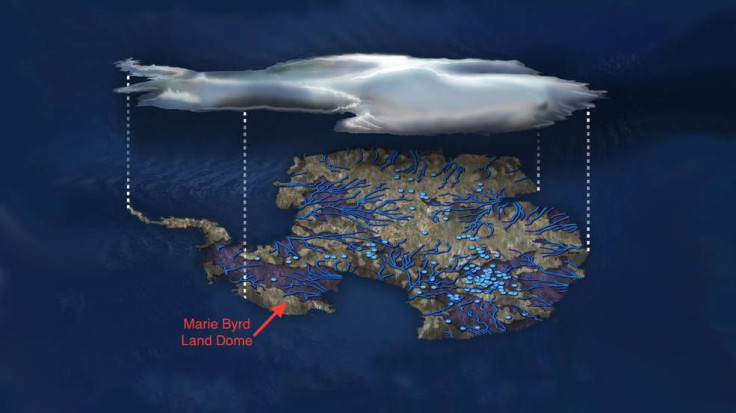Hot Mantle Plume Is Melting Antarctica From Beneath, NASA Study Finds

When Antarctica lost an enormous iceberg from the Larsen C ice shelf in July, it set off alarm bells about the future of the shelf itself, as well as about the region in general, which like other ice repositories on Earth, is faring badly under the onslaught of global warming. But this atmospheric threat from above, made worse by anthropogenic carbon emissions, is only half the problem.
A study by NASA has found new evidence to support a three-decades-old theory that said a geothermal source deep underneath the icy continent was melting it from below. The heat source is called a mantle plume, and its role in affecting volcanic activity and topographic features on Antarctica was first theorized about 30 years ago by a scientist at the University of Colorado, Denver.
Hélène Seroussi and Erik Ivins of NASA’s Jet Propulsion Laboratory (JPL) in Pasadena, California, studied this mantle plume idea through numerical modeling, since getting direct measurements from under the ice is difficult. The JPL researchers created a model that accounted for the physics of the ice sheets, sources of heat in the region and how heat is transported, changes in the altitude of the ice sheet surface, among other factors.
After that, they simulated a number of different scenarios for the size and location of a possible mantle plume, since both those factors were unknown, and compared the effects with observations of Antarctic melting, as recorded by satellites in space.
“The experiments show that mantle plumes have an important local impact on the ice sheet, with basal melting rates reaching several centimeters per year directly above the hotspot. In order to be consistent with observations of basal hydrology in Marie Byrd Land, the upper bound on the plume-derived geothermal heat flux is 150 milliwatts per square meter. In contrast, the active lake system of the lower part of Whillans Ice Stream suggests a widespread anomalous mantle heat flux, linked to a rift source,” the researchers wrote in the abstract of their study.
To put that in context, regions in the United States without volcanic activity have a heat flux from Earth’s mantle of 40 to 60 milliwatts, and Yellowstone National Park has, on average, about 200 milliwatts per square meter of heat under its surface. Marie Byrd Land is a large unclaimed area in remote West Antarctica, and the Whillans Ice Stream is a river of ice that pours from the West Antarctic Ice Sheet into the Ross Ice Shelf.
Antarctica has a number of lakes and rivers under the ice, and some of them are very rapid moving. As the lakes fill and drain at great speed, they cause the surface thousands of feet above to rise and fall by as much as 20 feet. Mantle plumes, first theorized in the 1970s, “are thought to be narrow streams of hot rock rising through Earth's mantle and spreading out like a mushroom cap under the crust,” a statement Tuesday on NASA’s website said.
The mantle plume under Marie Byrd Land formed sometime between 50 and 110 million years ago, a time when the West Antarctic Ice Sheet didn’t exist.
Before starting the study, Seroussi was somewhat skeptical of the mantle plume theory.
“I thought it was crazy. I didn't see how we could have that amount of heat and still have ice on top of it,” she said in the statement.
Titled “Influence of a West Antarctic mantle plume on ice sheet basal conditions,” the paper appeared in the Journal of Geophysical Research: Solid Earth.
© Copyright IBTimes 2025. All rights reserved.





















